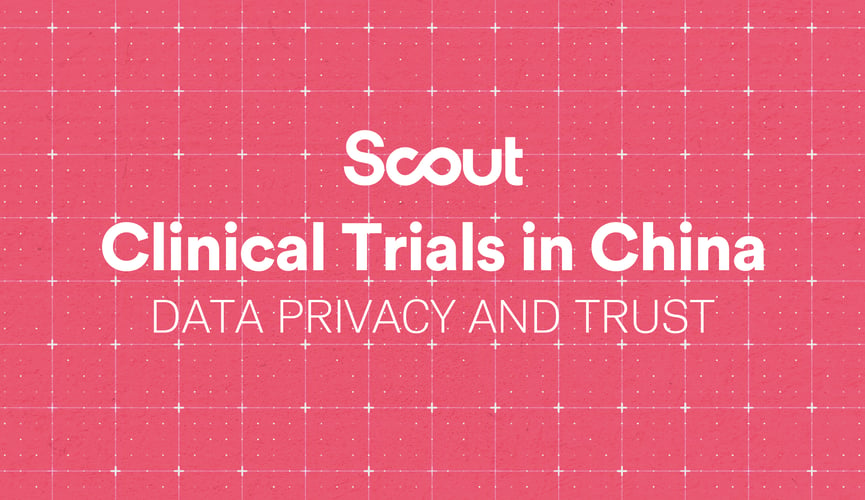
Sustainable practices are increasingly becoming a fundamental aspect of industries globally. The pharmaceutical sector is no exception – and it carries its own unique set of challenges to overall sustainability goals. With net-zero pledges aiming to drastically cut greenhouse gas emissions, the imperative for eco-friendly strategies has never been clearer.
Read on to learn about the factors that go into corporate sustainability strategies, why these strategies are business-critical to today’s organizations, and how finding the right partner is imperative to meeting your carbon-reduction goals. As part of these strategies, Science-Based Targets (SBTs) play a pivotal role in guiding companies toward meaningful emissions reductions.
Science-Based Targets for Sustainability
Science-Based Targets (SBTi) are defined, measurable goals set by companies to reduce their greenhouse gas emissions in line with climate science and the goals of the Paris Agreement. These targets ensure companies are actively contributing to the global effort to limit warming to well below 2°C above pre-industrial levels, ideally aiming for 1.5°C.
Adopting SBTs is crucial for corporate sustainability as it provides a clear, scientifically backed roadmap for emissions reductions, enhancing a company's credibility and accountability. By aligning with global climate goals, companies can mitigate their environmental impact and gain competitive advantages through improved efficiency, innovation, and stakeholder trust (more on this later).
The world’s leading pharmaceutical companies have set ambitious SBTi-approved targets. Here are a few examples:
- Sanofi: Aims to achieve net zero emissions across all operations (Scope 1 & 2) and the entire value chain (Scope 3) by 2045, with a target to reduce Scope 3 emissions by 30% by 2030 compared to their 2019 baseline.
- AbbVie: Targets a 42% reduction in Scope 1 and 2 CO2 emissions by 2030 from a 2021 baseline, with a commitment to source 100% of electricity from renewable sources by the same year.
- Bayer: Seeks to reduce Scope 1 and 2 emissions by 42% by 2030 and Scope 3 emissions by at least 12.3% by 2029, compared to a 2019 baseline.
- AstraZenica: Commits to zero carbon emissions from operations by 2025 and being carbon negative across the value chain by 2030.
- Novartis: Plans for carbon neutrality in operations by 2025 and net-zero emissions by 2040, with a 90% reduction in Scope 1 and 2 emissions by 2030.
Scope 3 Emissions in Clinical Meetings
Scope 3 emissions represent a significant challenge due to their indirect nature, encompassing emissions from the entire value chain. For the pharmaceutical industry, these emissions account for approximately 90% of total emissions. Key contributors include purchased goods and services, upstream transport and distribution, and waste from operations. In the context of clinical meetings, addressing Scope 3 emissions involves a thorough analysis and strategic planning to reduce the carbon footprint.
Strategies for Sustainable Clinical Meetings
Integrating sustainability into clinical meetings requires a multi-faceted approach. Read on for our overview of strategies to ensure your events are both impactful and eco-friendly.
Venue Selection
- Choosing Centrally Located Venues: Opt for venues that are easily accessible via public transportation to reduce travel emissions and enhance attendee convenience.
- Partnering with Certified Hotels: Select hotels with LEED or Green Seal certifications, ensuring a commitment to sustainable practices like energy efficiency and waste reduction.
Sustainable Practices and Materials
- Adopting Digital Solutions: Implement digital tools for registration and presentations to minimize paper waste. This not only reduces the event's carbon footprint but also streamlines processes.
- Offering Locally Sourced, Seasonal Food and Beverages: Source catering from local suppliers to lower transportation-related emissions and support local businesses.
- Eliminating Single-Use Plastics: Replace single-use plastics with reusable or biodegradable alternatives, such as refillable water bottles and water stations.
Travel and Technology
- Encouraging Green Transportation Options: Promote public transportation and carpooling, offering incentives like subsidized fares or shuttle services. Consider using airport hotels for non-local attendees to eliminate the need for additional ground transportation.
- Promoting Hybrid Meetings: Incorporate virtual participation to reduce long-distance travel and expand audience engagement.
- Utilizing Energy-Efficient AV Setups and Smart Lighting: Use energy-efficient audiovisual equipment and smart lighting to lower electricity consumption.
Comprehensive Emissions Management
- Optimizing Travel Logistics: Plan efficient travel routes and schedules, encourage direct flights, and group travel to minimize emissions.
- Sourcing Sustainable Materials: Choose eco-friendly materials for signage, displays, and promotional items, opting for recycled and biodegradable options.
- Implementing Waste Reduction Programs: Set up recycling and composting stations, educate attendees on waste disposal, and encourage minimal waste generation.
For more detailed insights and measures on making your clinical meetings carbon-conscious, visit our ecoScout for Meetings landing page.
Sustainability in Clinical Meetings: 3 Challenges and Solutions
While the benefits of integrating sustainability into clinical meetings are clear, getting there can present several challenges. Organizations may encounter obstacles such as budget constraints, resistance to change, and a lack of expertise. Here are three common challenges and practical solutions to help overcome them.
1. Budget Constraints
Implementing sustainable practices can sometimes require upfront investments, which may be a barrier for organizations operating under tight budgets. To address this, prioritize changes that offer the greatest environmental impact with minimal cost. For instance, switching to digital solutions for registration and communication can reduce paper waste and is often cost-effective. Explore incentives or grants available for sustainable initiatives to offset expenses.
2. Resistance to Change
Change can be daunting, particularly for organizations with established processes. To mitigate resistance, foster a culture of sustainability by engaging stakeholders at all levels. Communicate the long-term benefits of sustainable practices, not just for the environment but also for brand reputation and operational efficiency. Involve team members in sustainability planning to encourage buy-in and ownership of the initiatives.
3. Lack of Expertise
Many organizations may lack the in-house expertise needed to effectively implement sustainable practices. To overcome this, leverage partnerships with vendors who specialize in sustainable solutions. These partners can provide guidance, share best practices, and offer innovative solutions to help achieve sustainability goals.
Finding the Right Partner
It takes the right partner to achieve sustainability goals for your clinical meetings. By collaborating with vendors committed to eco-friendly practices, you can ensure every aspect of your event contributes positively to your environmental objectives. This partnership fosters a cohesive approach to sustainability, making it easier to track and meet green goals.
Why Vendor Alignment is Crucial
Aligning with vendors who prioritize sustainability is essential for a holistic approach to meeting environmental targets. Each vendor's practices, from venue selection to catering, influence the event's overall carbon footprint. Choosing vendors focused on reducing emissions and implementing sustainable practices helps create events that align with global net-zero targets, driving significant environmental impact.
Criteria for Sustainable Vendor Selection
- Certifications: Seek vendors with recognized sustainability certifications, such as LEED or Green Seal. These certifications signify adherence to rigorous environmental standards, covering aspects like energy efficiency and eco-friendly products.
- Eco-friendly Practices: Evaluate vendors' daily operations for sustainability. Look for waste reduction strategies, use of recycled materials, and energy-efficient processes. Prioritize those with a demonstrated commitment to ongoing environmental improvements.
Incorporating sustainability into vendor selection involves thorough research and aligning with partners who share your values. This not only achieves environmental goals but also builds long-term, beneficial relationships.
The Business Case for Sustainable Clinical Meetings
Sustainable clinical meetings are essential for environmental responsibility and offer significant business advantages. Here are three ways integrating sustainability into your events can benefit your organization.
1. Enhancing Brand Value
Adopting sustainable practices in clinical meetings demonstrates a strong commitment to corporate responsibility. This enhances your brand’s reputation among stakeholders, including patients, partners, and the broader community. A positive brand image, built on ethical principles and environmental stewardship, differentiates your company in a competitive market.
2. Economic Efficiency
Sustainable practices contribute to more efficient resource use and streamlined operations. Utilizing digital solutions reduces the need for printed materials, aligning with eco-friendly goals and enhancing event planning efficiency. By optimizing resource use, sustainability initiatives ensure that events are conducted with a minimal environmental footprint, showcasing a commitment to responsible and innovative event management.
3. Ensuring Long-Term Business Prosperity
Sustainable practices contribute to the long-term viability of your business. Reducing your carbon footprint and adopting eco-friendly strategies helps mitigate risks associated with climate change regulations and resource scarcity. This proactive approach ensures compliance with evolving environmental standards and positions your company for future growth and prosperity.
Incorporating sustainability into clinical meetings is a strategic move that supports brand value, operational efficiency, and long-term success.
Conclusion
Sustainability in clinical meetings is crucial. By integrating eco-friendly strategies—like centrally located venues, digital solutions, green transportation, and managing emissions comprehensively—you can significantly reduce your events' carbon footprint, including Scope 3 emissions, which address the broader environmental impact of your supply chain and activities.
These practices enhance brand value and ensure long-term prosperity. Demonstrating strong environmental stewardship and ethical conduct is essential, and choosing the right partner to help reduce Scope 3 emissions is key.
Take the next step towards hosting impactful, sustainable clinical meetings. Click here to explore Scout Meetings' carbon-optimized options to create greener, more efficient events aligned with your sustainability goals.
.png?width=1387&height=800&name=Scout_Logo_RGB%20(1).png)


